Diamond Color Treatments And Enhancements

Diamond color is a primary attribute that determines rarity and cost.
With advances in technology, there are various types of treatments and enhancements that can be used to alter a diamond’s color completely. Some of these methods will permanently change the diamond’s appearance, whilst others are only temporary measures.
But the question is, why go through all the hassle? Why not buy a natural diamond in the first place and save all the trouble? Well, the reason is simple and it all points to one thing: Cost.
In this writeup, I’m going to reveal the different types of treatments that are used to enhance a diamond’s color artificially and reveal the things you need to look out for to avoid getting ripped off.
Case Study: Why Do People Buy Color Enhanced Diamonds?
A diamond’s color – or lack of color – is one of the key attributes that determine its value and appeal.
On the GIA color scale of D-Z, diamonds with the least amount of color are much rarer in nature and fetch higher prices compared to diamonds that have yellow or brownish tints in them.
On the other hand, a richer hue and more intense color of a fancy colored diamond like blue, pink or red would be highly sought after by collectors. Not surprisingly, these are also the type of diamonds that are sold at auctions for record-breaking prices.
As an example, here are 2 cushion cut diamonds that are 0.5ct in size. The one on the left is graded by GIA as an intense purplish pink color while the one on the right is a D color.
The price for a natural pink fancy colored diamond is astronomical and would probably shock you. In fact, it’s close to a 100 times more expensive than a D color diamond of the same size!
How many people can afford that kind of money ($118,000!) for an object that’s only 5mm in size? Well, I don’t although I do hope to have that kind of spare cash lying around in future. But you get the idea, these things cost a bomb.
So, what are the other options available for average consumers to get their hands on colored diamonds?
The use of treatments to artificially enhance or generate color in a diamond is one such viable solution. In the following paragraphs, I’ll be explaining the types of color treatments that are commonly used in the industry.
Ink Staining And Color Coating Enhancements
In the olden times, ink staining (dyeing) is one of the most popular methods used to alter a gemstone’s appearance. People could stain their diamond with a layer of colored ink to selectively enhance or reduce its hue. Do note that most inks only provide a temporary solution and will fade over time when the jewelry is worn.
With the current technology available today, much has changed. Diamonds can now undergo a sputtering process for a thin film to be evenly deposited on the surface of the stone. Although the thickness of the thin film can be in tens of microns (about the thickness of a hair), it can completely change the diamond’s color to a uniform one of your choice.

You Can Virtually Get Any Colors Of Your Choice – Photograph Credits: Serenity Technology
For example, a sputtered pink coating can give the diamond a fancy pink appearance. If a thin layer of blue material is sputtered on yellowish diamonds, it can help to neutralize the yellowish body color and cause it to appear colorless.
Like ink staining, the downside of sputtering is that it isn’t a permanent enhancement. Overtime, the coating can get scratched and may peel away with wear and tear.
Heat Pressure And High Temperature (HPHT) Treatment
HPHT treatment is probably the most well known method to change the color of a diamond on a commercial basis. With proper control of the process, HPHT can be used to lighten the tint or saturate the existing tone of a lower grade diamond.
For example, heat and pressure treatment can turn a yellowish looking stone into a fancy colored one to increase its appeal. By making some tweaks in the process recipe, the same technique can also be used to turn brownish diamonds into colorless stones.

On a microscopic scale, subjecting a diamond to high heat and pressure will cause changes to take place within its molecular structure.
Color that was caused by structural defects could now be “corrected” due to plastic deformation and rearrangement of the molecules. In the example above, the brownish hue is removed and the treatment turns the diamond colorless.
The only real issue with this process is that the final appearance can never be predetermined with 100% accuracy. That’s why there is some risk involved here as you won’t know how the diamond will look like until the procedure has been completed.
Due to its relatively low cost operations, HPHT processes are the most common treatments seen in colored diamonds. If you intend to get a natural fancy colored diamond, make sure you check and verify that it hasn’t been heat treated previously. The best way to do this is to send the diamond to GIA for grading.
Irradiation Treatment
As the name suggests, the irradiation process subjects the diamond to high energy rays of radiation from sources like accelerators and nuclear reactors. With the heavy bombardment of the diamond’s crystal lattice, the carbon atoms get hit out of their original positions.
This rearrangement of the crystal lattic changes the hue of the diamond. Irradiation processes are irreversible and could also be used in tandem with HPHT via a 2 step combination process. Typically, they are used to create green, blue, brown, yellow and black color diamonds.
Color Enhancement Using the Setting
The setting itself can be manipulated to create a look with a specific tone to it. Simply by changing the color of the setting, you can enhance the color of light that is reflected back through the diamond.
For example, a gold setting is responsible for giving mounted gemstones a yellow hue, whilst platinum and white gold settings can enhance a colorless diamond’s appearance by making it look whiter.
Having a clever ring setting design can also make the center stone look larger and create better appeal to the jewelry piece. Check out the following fancy yellow diamond ring that I purchased for my wife.

The halo setting was selected to create an emphasis on the yellow center stone. Also, the prongs were purposely made of yellow gold to enhance the color of the center stone. If you are interested, you can read full details of the ring review here.
Why The Choice of Gemological Lab Matters?

GIA can reliably detect artificial color enhancements in fancy color diamonds.
For the uneducated consumer, buying a colored diamond is similar to opening a can of worms. Since the majority of colored diamonds in the market are treated, you have to be extremely careful with whom you are dealing with or you will get ripped off.
In order to detect the latest treatment methods, you would need state-of-the-art equipment that your local gemologist or appraiser would never have access to. I would even go as far as to say that some major labs like EGL and IGI can also fail to detect treated diamonds.
If you want to ensure what you are buying is the real deal, you should never settle for anything less than a GIA report. While wholesalers and retailers are required by law to disclose the presence of treatments, I would never place trust in what the seller claims or say about their goods.
The reason why I recommend GIA is that they are always at the forefront of gemological research and they consistently invest in lab equipment to keep up to date with detection technology.
I want to end this article by saying that it’s OK to buy treated diamonds at lower prices although I strongly advice against it. However, it is NOT OK to buy one that is being passed off as being a natural fancy colored diamond.
Related Articles
Leave A Comment

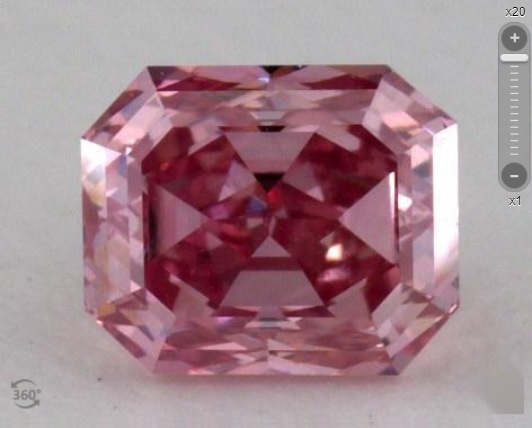
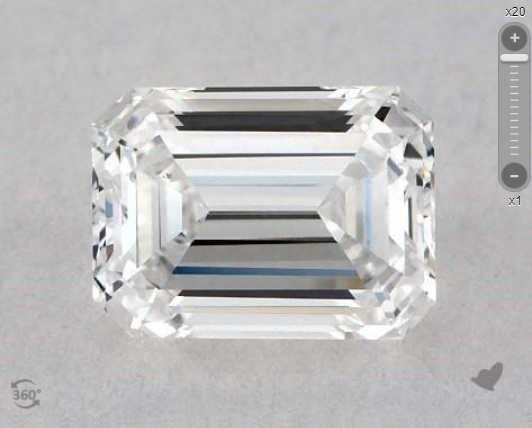
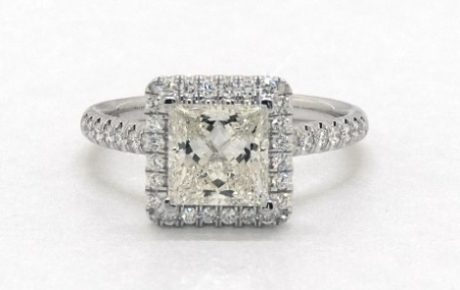
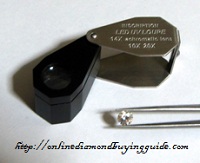
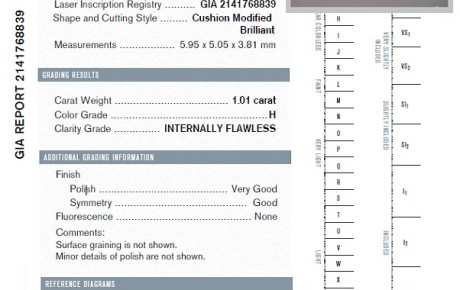
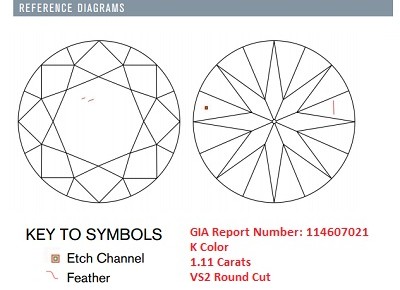









11 Comments
Thanks for the informative post. I recently came across a wholesaler in Dallas selling certified clarity enhanced jewelry. The prices are really tempting and affordable compared to the normal diamonds. Can you share anything you know about https://www.tevadiamonds.com?
Can you change the color of a diamond without taking it out of the setting?
Clarity enhanced diamonds are a can of nasty worms to open. They are cheap for a reason and I can tell you that it is due to the diamonds being of junk quality and poorly cut. I don’t know anything about TevaDiamonds.com but if you are based in Dallas, then this write up to buying engagement rings in Dallas will interest you.
I’m not sure whether I understand you correctly when you asked “can you change the color of a diamond without taking it out of the setting”. If you are talking about HPHT, irradiation or the other processes mentioned here, there’s no way you can do it mounted.
I really appreciate your website and all the information you have provided to the public and the newbies who are interested in buying a diamond for the first time (and hopefully last).
I have a few questions for you.
1) First and foremost, what are your thoughts on HPHT diamonds? I am not buying it as an investment, but rather to be placed on a ring and as a wearable item for life.
2) I have encountered a E color (HPHT) diamond, that is VVS2 in clarity and a comment on the GIA report that the clarity grade is based on internal graining that is not shown. what is that mean?
3) On the same report (1192297056), clarity characteristic chart/graph is completely left blank, what is that mean? Does it mean that there are no inclusions, feathers, cloud etc at all?
4) In between these two diamonds (1192297056 vs. 6197482944), which one would you choose? (please see attached GIA reports on both). One is VVS2, and another is VVS1. The cost difference is ~$1500
5) What do you think would be the fair price to pay for either of these diamonds.
6) How is HPHT treatments detected by the labs when they are sent for grading?
7) Do you think irradiated pink diamonds or irradiated blue diamond rings are able to hold their value?
Regarding your question about internal graining, read this: https://beyond4cs.com/grading/other-comments/
HPHT diamonds are usually junk-tier diamonds that are treated in order to make them saleable. Almost every single HPHT diamond I’ve seen are just “refurbished” junk with terrible cut quality and clarity. That’s my main gripe with HP HT diamonds.
The real concern in the industry is that there is a high possibility of undisclosed HPHT treated stones. It’s an arms race between improving enhancement technology and detection methods. Currently, a machine called the SSEF diamond spotter is used to determine the type of diamonds that are suitable for HPHT processes. To confirm whether a diamond has been treated, the diamond is analyzed with a Raman spectrometer for luminescence.
For the record, I have yet to see a truly well cut HPHT diamond over the course of 5 years. And that says a lot given the amount of stones I have seen.
If they were well cut and accurately represented by jewelers, then I won’t have an issue. Clarity is not your problem here. Poor cut quality is. There are far better places to buy diamonds and better options to keep costs low if you are on a tight budget.
> https://beyond4cs.com/best-places-to-buy-diamonds/
Lastly, irradiated diamonds, regardless of whether they are blue or pink or orange, have no value on the secondary market. Nobody wants them. If you are looking for retaining value, you need to pony up and buy investment grade colored diamonds that will set you back in the millions of dollars.
I was doing some research online about diamonds and stumbled across your website. It’s very informative and I was just wondering if I could have your views on HPHT diamonds. I googled it but it doesn’t seem like there’re a lot of comparisons between natural untreated diamonds and natural HPHT diamonds. More specifically I have the following questions I was hoping you could help me with.
1. The HPHT diamonds we’re looking at are E and F in colour, do they look the same as natural untreated diamonds? Is there any way people could tell it’s been treated? Even if we go into a jewellery store with it?
2. Does the treatment process affect any other aspects of the diamond such as its luster?
3. Are natural untreated diamonds superior in anyway?
We’re looking to buy a colour treated HPHT diamond mainly because we’ve been told it’s exactly the same as a natural diamond in every way and that it’s impossible for people to see any physical difference between them. It’d be great if you could share your opinion!
The four diamonds we’re looking at are below, could you please also share which of the following ones has the best proportion and if it’s good.
1. E/ VVS1
Table: 56%
Depth: 61.9%
Crown Angle: 34.5%
Pavilion Angle: 41.0%
Girdle thickness: medium – slightly thick (faceted) 3.5%
Cutlet Size: none
2. F/ IF
Table: 59%
Depth: 60.2%
Crown Angle: 32%
Pavilion Angle: 41.2%
Girdle thickness: medium – slightly thick (faceted) 3.5%
Cutlet Size: none
3. F/ VVS1
Table: 58%
Depth: 61.4%
Crown Angle: 32.5%
Pavilion Angle: 41.6%
Girdle thickness: medium – slightly thick (faceted) 3.5%
Cutlet Size: none
4. Table: 56%
Depth: 62.8%
Crown Angle: 36.5%
Pavilion Angle: 40.6%
Girdle thickness: medium – slightly thick (faceted) 3.5%
Cutlet Size: none
I think only diamond 1 has a score of below 2 (1.8) on HCA and diamond 2 has a score of 2. Could you please let me know judging from the numbers above, if any of them I should definitely not buy. They all have triple excellent from GIA.
Many thanks and I look forward to hearing from you soon!
There’s nothing wrong with HPHT diamonds except that 99.99% of such diamonds aren’t well cut based on experience. These are bottom of the barrel diamonds and people who deal with them don’t care about cut quality as much as they do in making a buck out of them. Only the first diamond has proportions that are worth a further look into.
You need to read these 3 articles:
https://beyond4cs.com/buying-diamonds-blind/
https://beyond4cs.com/shapes/round/ideal-proportions/
https://beyond4cs.com/truth-about-gia-triple-excellent-diamonds/
I believe I bought an ink stained pink diamond for a fancy pink diamond as the vivid pink colour faded to a very faint pink colour in 6 weeks. I did not use the ring every day and always removed it when cleaning. The jeweller said that cleaning fluids such as hand sanitizer removed the colour. What would they have used to colour the stone? Thank you
If it came off without physical contact or abrasion, it is likely some sort of ink coating that reacts with chemicals you exposed your jewelry to.
Hi,..just an observation. I want to start my comment off with agreeing that GIA is a fine, reliable laboratory. But they are not the only one out there who is trust-worthy, reliable and excel in reserch. I am assuming that they these laboratories know who they are, and if you would like my personal opinions, I will be happy to share them. I should note that in considering a laboratory’s “worthiness,” the factor of accessibilty should be included. Many laboratories cater exclusively to the “trade,” and leave the non-“insiders” out in the “cold,” forcing consumers to fend for themselves or rely on others less knowledgeable. I have found the term, “use-friendly,” to be somewhat lacking when dealing with some laboratories.
I purchased a 0.23 point blue diamond set in a very old white 18k setting, the circa looks around 1940. The stone has amazing brilliance yet when I loop it the inclusions are mind blowing. Still the cut I guess gives it such shine. I have tried to look at it for any evidence of treatment but find nothing. What I cannot understand is why would someone take a crummy diamond, turn it blue, and set it in 18k? The ring has been well loved and worn based on the thinning of the band. I hesitate to send it to GIA. Do you really believe no jeweler without all the high end equipment can give me an opinion? I went as far as having a GIA trained person look at it twice using a 30x microscope and he couldn’t say one way or the other. Appreciate any thoughts……I’m no collector, just a lover of diamonds. No lab created stones for me, hence why I want to try and figure out if it’s legit or not. Inquiring minds want to know. Regards.
When a diamond is mounted in a setting, it makes it very difficult for a gemologist to properly assess the diamond. But if there are tell tale signs of a diamond being treated, someone with experience can roughly make a “guess” but can’t give you an answer with certainty. Ungraded fancy color diamonds are a can of worms and not that easy to properly grade for treatments because some advanced equipment is available. But I will just say this. If you bought your fancy blue diamond for a very cheap price, it is likely treated in some way or another. And another tell tale sign is that the seller would have sent the diamond to GIA for a proper grading report because it instantly raises the value of the diamond and makes it sell for more.